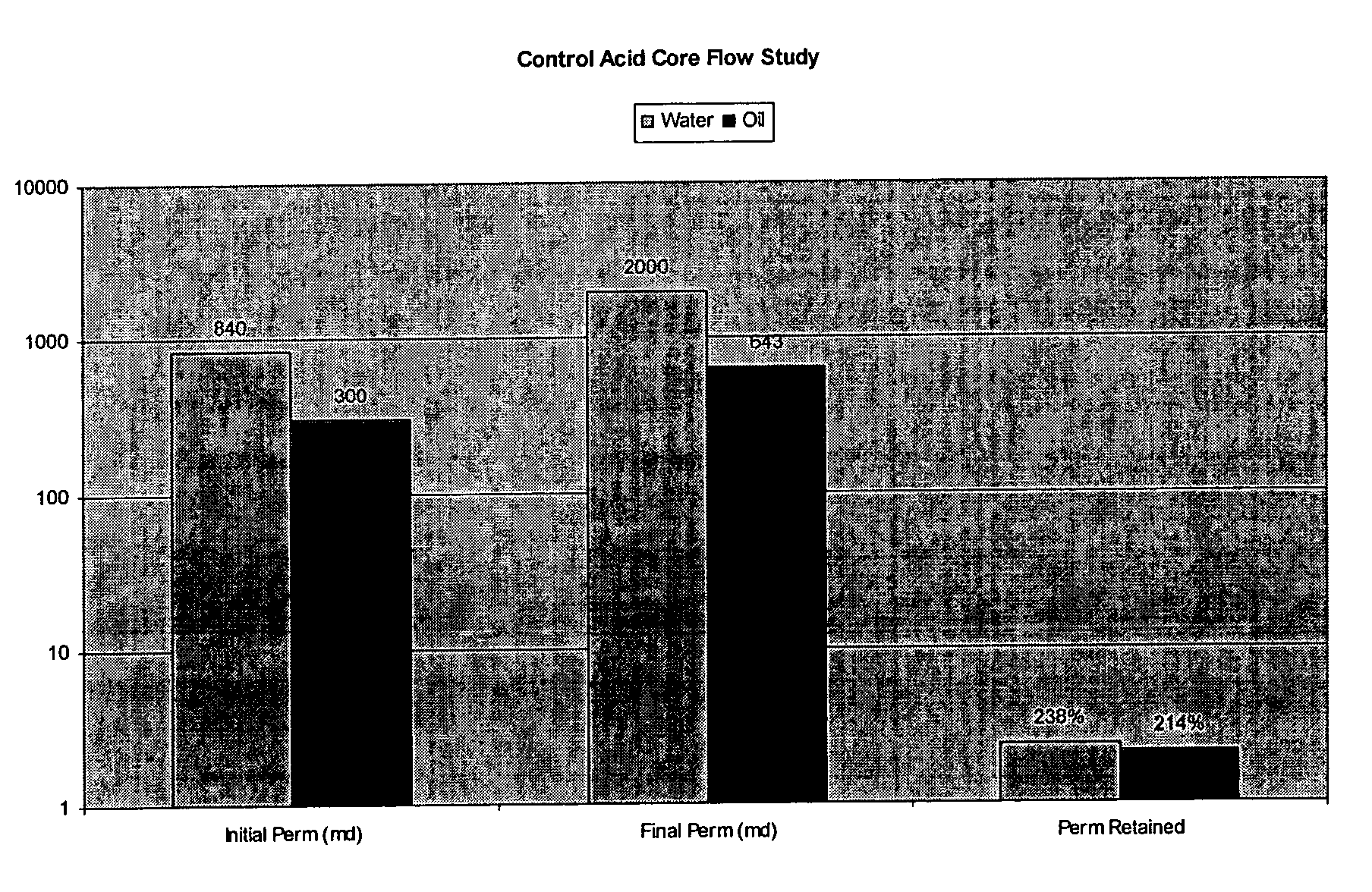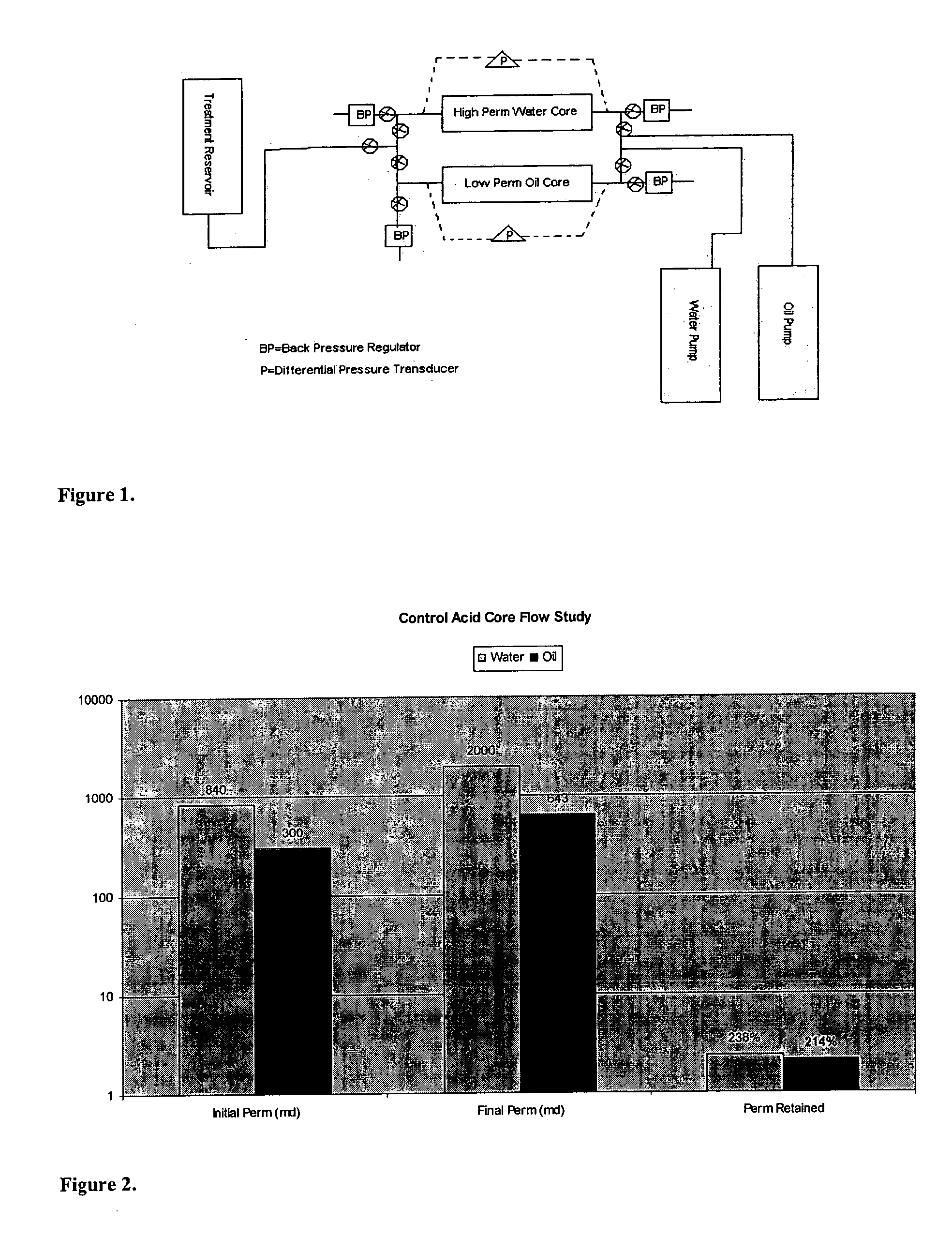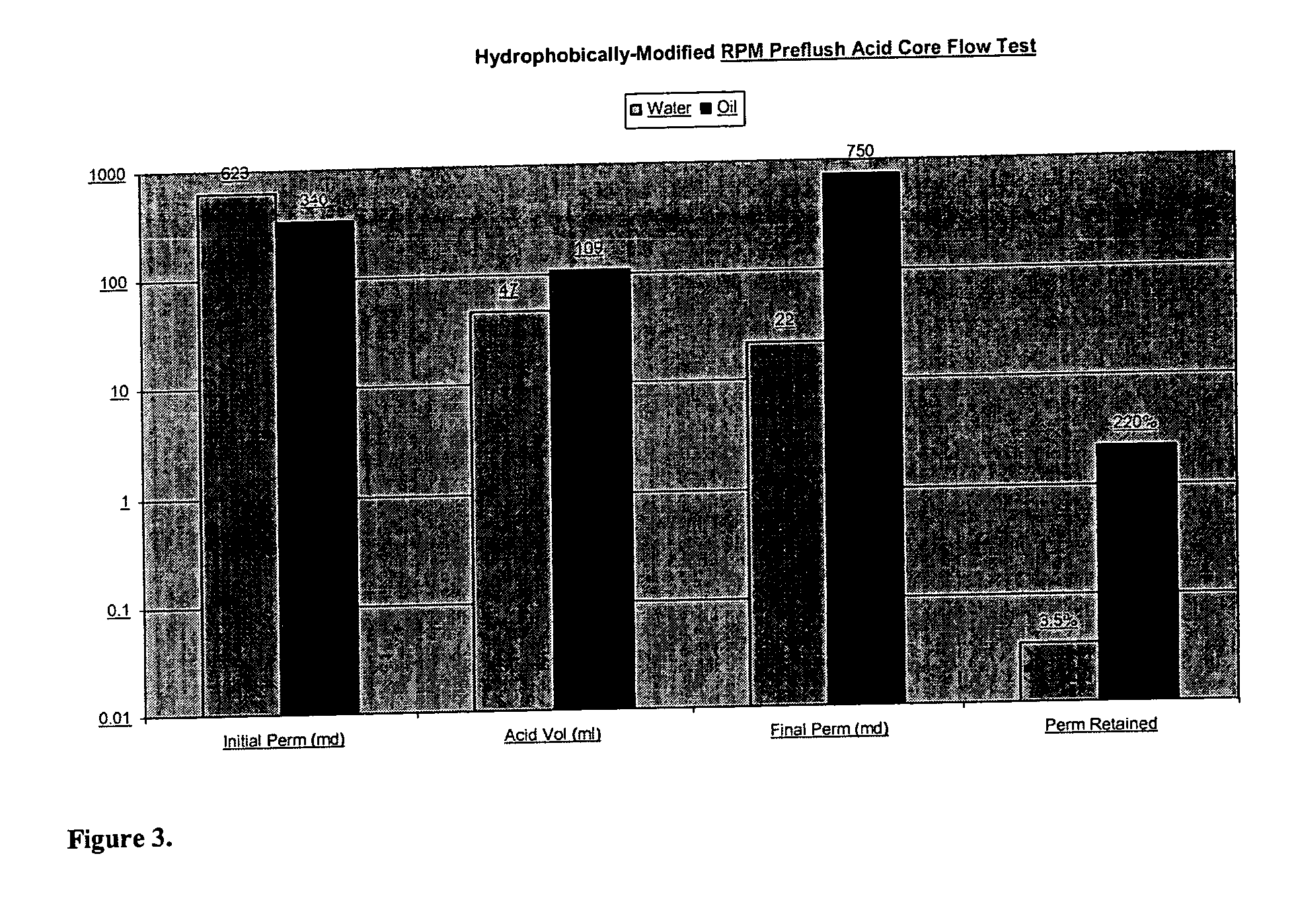Methods of reducing water permeability for acidizing a subterranean formation
a subterranean formation and water permeability technology, applied in fluid removal, chemistry apparatus and processes, borehole/well accessories, etc., can solve the problems of increasing permeability, increasing water to hydrocarbons recovered, and increasing water to hydrocarbons. the effect of reducing or precluding the production of water
- Summary
- Abstract
- Description
- Claims
- Application Information
AI Technical Summary
Benefits of technology
Problems solved by technology
Method used
Image
Examples
example 1
[0066] In this example, a homopolymer of DMAEMA is prepared as follows. To a 3 L round bottom flask is added 1,968 grams of water, and this is sparged with nitrogen for 1.5 hours. Next is added 105 grams of DMAEMA, 25.8 grams concentrated sulfuric acid (to achieve a pH of about 7.9), and 0.46 grams 2,2′-azobis (2-amidinopropane) dihydrochloride. The mixture is then heated to 110° F. under a nitrogen atomosphere, while stirring, and held for 18 hours to produce a highly viscous polymer solution.
[0067] The quaternized polymer is produced as follows: To a 250 mL round bottom flask is added 71.0 grams of the DMAEMA homopolymer, as described above, followed by 4.0 grams 15% NaOH (to achieve a pH of about 8.9). Next is added 54.6 grams water, 0.36 grams hexadecyl bromide, and 0.39 grams benzylcetyldimethylammonium bromide. This mixture is then heated to 140° F., while stirring, for 24 hours.
example 2
[0068] To prepare a quaternized DMAEMA monomer, to a 100 mL round bottom flask is added 16.7 grams of DMAEMA and 16.2 grams of hexadecyl bromide. The mixture is heated to 110° F. and stirred for 24 hours. The mixture is then poured into 1 liter of petroleum ether, resulting in precipitation of the quaternized monomer. The monomer is collected on a Buchner funnel, washed with excess petroleum ether, collected, and dried in a vacuum dessicator.
[0069] To prepare a polymer of DMAEMA and quaternized DMAEMA, to a 250 ml round bottom flask, add the following: 3.8 grams of DMAEMA, 0.7 grams of the quaternized monomer described above, 84.5 grams water, and 1.2 grams concentrated sulfuric acid (achieving a pH of about 7.1). This solution is then sparged with nitrogen for 30 minutes, followed by the addition of 0.035 grams 2,2′-azobis (2-amidinopropane) dihydrochloride. The resulting solution is then heated under a nitrogen atmosphere, with stirring, to 110° F. and held for 18 hours to produc...
example 3
[0088] This example illustrates how the polymeric material of the present invention can affect the permeability of the water in sandstone lithology. Darcy's Linear Flow Equation was used to determine the permeability of the porous media. Parameters for the permeability measurements include: core dimensions of about 6 inches in length by 1-inch diameter (having a cross sectional area of about 5.07 square centimeters); brine viscosity of about 1 centipoise; a differential pressure across the core of about 22 atmospheres; and a temperature of 175° F. In this example, the following abbreviations were used: Water Core=Brown Sandstone; Oil Core=Berea Sandstone; water=API Brine of 9% NaCl and 1% CaCl2; oil=kerosene; RPM polymeric material=2000 ppm of hydrophobically-modified polydimethylaminoethyl methacrylate in 2% KCI Water; Spacer Water=5% NH4Cl; Acid=5% HCl; Overflush Water=5% NH4Cl; Kwro=Permeability to water at residual oil; Korw=Permeability to oil at residual water. The effective p...
PUM
| Property | Measurement | Unit |
|---|---|---|
| diameter | aaaaa | aaaaa |
| diameter | aaaaa | aaaaa |
| temperatures | aaaaa | aaaaa |
Abstract
Description
Claims
Application Information
 Login to View More
Login to View More - R&D
- Intellectual Property
- Life Sciences
- Materials
- Tech Scout
- Unparalleled Data Quality
- Higher Quality Content
- 60% Fewer Hallucinations
Browse by: Latest US Patents, China's latest patents, Technical Efficacy Thesaurus, Application Domain, Technology Topic, Popular Technical Reports.
© 2025 PatSnap. All rights reserved.Legal|Privacy policy|Modern Slavery Act Transparency Statement|Sitemap|About US| Contact US: help@patsnap.com



